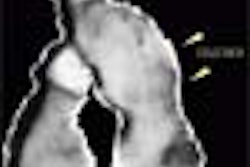MONTREAL - Ultrasound imaging is essential for both diagnosing polycystic ovaries (PCO) and for guiding decisions about fertility treatment in these patients, according to an infertility specialist.
"It is through ultrasound that we can predict the patient’s risk of undergoing ovarian stimulation and thus decide on the best course of infertility treatment," said ob/gyn Dr. Sean Ling Tan during a presentation at the congress of the World Federation for Ultrasound in Medicine and Biology and the American Institute for Ultrasound in Medicine this week.
Tan, who is the head of the McGill Reproductive Center at McGill University in Montreal, explained that with ovulation-inducing drugs, the risk of ovarian hyperstimulation syndrome (OHSS) is increased in patients with PCO. The incidence in PCO patients can climb to 6% versus around 1% in patients with normal ovaries.
The best option for treating these patients is a technique called in vitro maturation (IVM). In IVM, immature oocytes are retrieved from the ovaries, which do not require stimulation with fertility drugs. The oocytes are matured and then fertilized in vitro (IVF).
"IVM is simpler, cheaper, and safer for these patients," Tan explained.
But the selection of appropriate PCO candidates for IVM hinges on ultrasound assessment. To achieve acceptable pregnancy rates, IVM patients need to have good antral follicle counts, ovarian volume, and adequate ovarian stromal blood flow, all of which can be assessed sonographically.
In a study of 146 PCO patients undergoing 189 IVM cycles, Tan’s group determined that only patients with more than 20 antral follicles, or very young patients with between 10 and 20 follicles, should be offered IVM. Smaller numbers of antral follicles predicted poor success rates with IVM and were an indication that the patient should be offered IVF, he said.
At the McGill center, patients treated with IVM have a pregnancy rate slightly lower than that of patients treated with regular IVF (26.2% vs. 38.3%). However, the rates of OHSS are dramatically reduced in the IVM patients, at zero, compared to a rate of 10% in the IVF group.
"Not only does ultrasound help in the initial diagnosis of PCO patients, it also predicts their ovarian response to fertility drugs and thus their risk of OHSS, and finally it predicts their success rate for IVM based on the number of antral follicles, thus helping the clinician in deciding between IVM and IVF," Tan said.
By Kate JohnsonAuntMinnie.com contributing writer
June 5, 2003
Related Reading
Uterine fibroid embolization does not impair fertility, April 1, 2003
Pregnancy complication rates increased after uterine artery embolization, November 1, 2002
UAE fights fibroids, paves way for pregnancy, April 9, 2002
Ultrasound criteria in the diagnosis of polycystic ovary syndrome (PCOS), December 8, 2000
Copyright © 2003 AuntMinnie.com



















